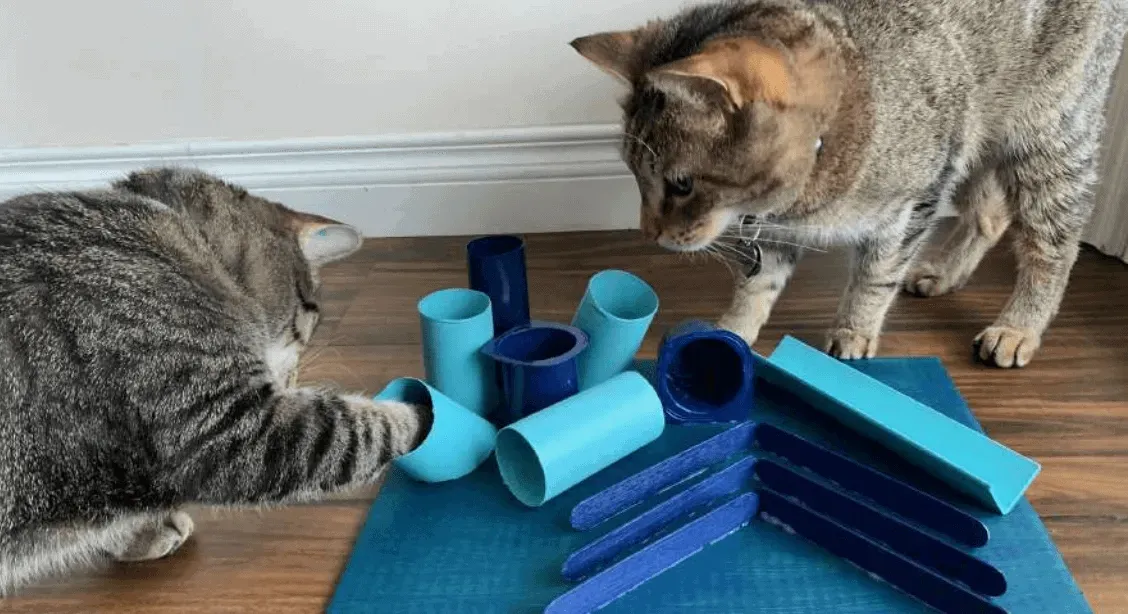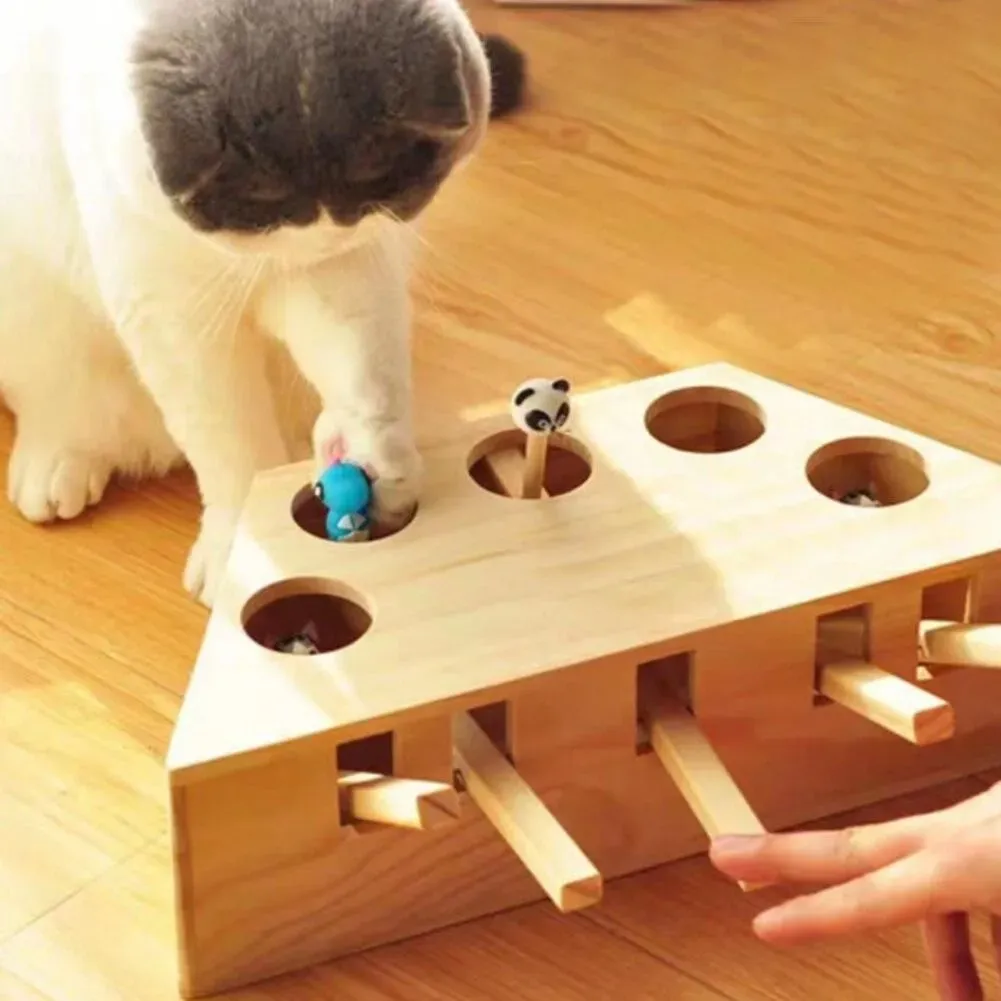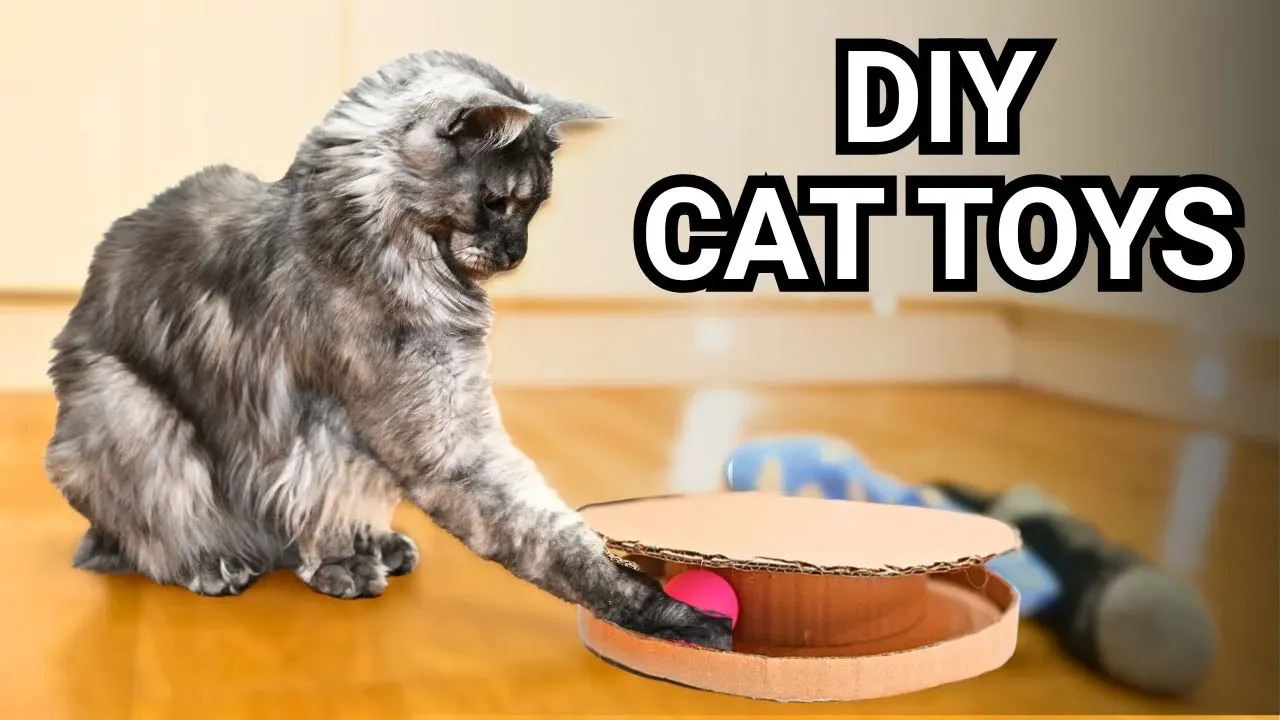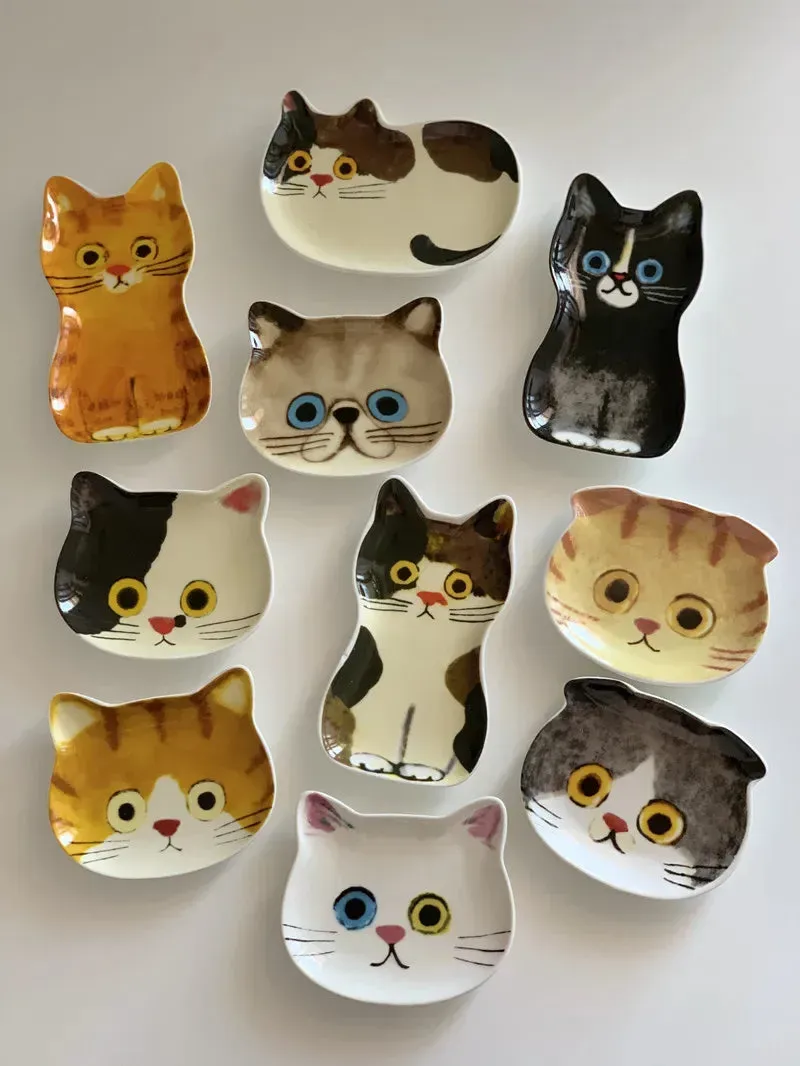Table of Contents
Got a cat bouncing off the walls? Is your wallet feeling a little lighter than you'd like? You're not alone. Keeping indoor cats entertained can feel like a full-time job, and buying fancy gadgets adds up fast. An antsy cat isn't just annoying; it can lead to behavioral issues, shredded furniture, and that look of sheer boredom that just breaks your heart. But before you resign yourself to a life of constant laser pointer duty or shelling out for the latest automated gizmo, consider this: you probably have everything you need to create amazing diy interactive cat toys right in your home. This article cuts through the fluff to show you simple, effective ways to build engaging toys that will challenge your cat's brain and satisfy their natural hunting instincts using everyday items. We'll explore why interactive play is crucial, dive into easy projects using things like cardboard boxes and old clothes, and even look at ways to make treat-dispensing puzzles. Forget expensive purchases; get ready to unleash your inner craft guru and keep your feline friend happy and stimulated without spending a dime (or very close to it). Let's turn that restless energy into playtime!
Why Your Cat Craves Interactive Play (and How DIY Helps)

Why Your Cat Craves Interactive Play (and How DIY Helps)
Born to Hunt, Not Just Nap
Look at your cat. Really look. Sure, they spend 16 hours a day perfecting the art of the nap, but underneath that furry, purring exterior is a finely tuned predator. Their ancestors weren't lounging on heated beds; they were hunting for every meal. That instinct is hardwired. They need to stalk, chase, pounce, and "kill" their prey. Without an outlet for these natural behaviors, that pent-up energy and predatory drive have to go somewhere. Often, that somewhere is your ankles at 3 AM or the corner of your favorite couch. Understanding this innate need is the first step to a happier cat and intact furniture.
Boredom Leads to Trouble
A bored cat is a creative cat, and not usually in a good way. Lack of mental and physical stimulation is a primary culprit behind many common feline behavioral problems. Think destructive scratching, excessive meowing, aggression towards you or other pets, even anxiety and stress-related issues. It’s not that they're spiteful; they're literally going stir-crazy in a domestic environment that doesn't challenge them. Providing regular interactive play isn't just a luxury; it's essential for their psychological well-being and keeping your home from looking like a feline demolition zone.
Signs Your Cat Needs More Play:
- Attacking your feet or hands frequently
- Excessive vocalization (meowing, yelling)
- Destructive behavior (scratching furniture, knocking things over)
- Over-grooming or pulling out fur
- Aggression towards other pets or people
- Restlessness or inability to settle
DIY: The Smart, Cheap Solution
This is where the magic of diy interactive cat toys comes in. You don't need a degree in engineering or a massive budget. You just need to tap into that natural prey drive. DIY toys, when done right, mimic the unpredictable movements of small animals, engage their problem-solving skills, and provide that crucial physical workout. Using simple materials you already have allows you to experiment, tailor toys to your cat's specific preferences (some love feathers, others crinkle sounds), and replace them easily when they inevitably get, shall we say, *loved* to death. It’s about providing opportunity, not expensive obligation.
Easy DIY Interactive Cat Toys from Stuff You Already Have

Easy DIY Interactive Cat Toys from Stuff You Already Have
The Mighty Power of Trash (to Your Cat)
Let's be honest, your cat often prefers the box the expensive toy came in over the toy itself. This isn't a personal insult; it's a clue. Some of the best diy interactive cat toys require zero crafting skill and zero dollars. Think about what naturally moves or makes interesting sounds. A crumpled paper ball? Classic. The plastic ring from a milk jug? Hours of frantic batting across the floor. Bottle caps (ensure they can't be swallowed)? Instant flick-and-chase game. Even an empty toilet paper roll can become a simple puzzle or a tunnel to bat through. The key is observing what grabs their attention and then presenting it in a way that encourages interaction – rolling it, hiding it slightly, or tying it to a string (under strict supervision, obviously).
Socks, Shirts, and the Elusive Wand Toy
Moving slightly beyond literal trash, your dresser and laundry basket are goldmines for Easy DIY Interactive Cat Toys. An old sock, tied in knots, becomes a chew and toss toy. You can even stuff a little crinkled paper or a few dry beans inside for extra noise (make sure it's tied securely!). Old t-shirts can be cut into strips and braided together to make a simple tug toy or a dangler. For a basic wand toy, grab a stick or a wooden dowel (even a sturdy ruler works) and tie strips of fabric, feathers (ethically sourced, please!), or even just crumpled paper to the end. The unpredictable movement of a wand toy is pure predatory catnip. Just remember the cardinal rule: never leave string or ribbon toys out unsupervised, as they can be dangerous if ingested.
Quick & Easy DIY Toy Materials:
- Crumpled paper or aluminum foil
- Plastic rings (from bottles or milk jugs)
- Cardboard tubes (toilet paper, paper towel)
- Old socks
- Fabric scraps (t-shirts, felt)
- Feathers
- Sticks or dowels
Cardboard Box Creations: Simple DIY Interactive Cat Toys

Cardboard Box Creations: Simple DIY Interactive Cat Toys
The Unbeatable Box: Your Cat's Cardboard Castle
Alright, let's talk about the undisputed champion of feline entertainment: the cardboard box. You know the drill. You order something online, the package arrives, and before you can even unpack it, your cat has claimed the box as their own personal kingdom. This isn't just cute; it's prime real estate for creating fantastic diy interactive cat toys. Boxes offer security, a place to hide and ambush, and a surface that's oddly satisfying to scratch. Forget those elaborate cat condos; a simple box is often all it takes to spark joy (and predatory instincts). The beauty is in the simplicity. You don't need fancy tools, just a box and a bit of imagination.
Holes, Hiding, and Hunting: Box Play Ideas
Turning a plain box into an interactive playground is ridiculously easy. Grab a utility knife (carefully!) and cut several holes of various sizes into the sides and top. Make some just big enough for a paw to fit through, others large enough for your cat to peek out or even squeeze into. Toss some crumpled paper, bottle caps, or small toy mice inside. Your cat will spend ages batting at the hidden treasures through the holes, engaging their natural hunting sequence. You can also connect multiple boxes with tunnels or cut flaps to create different entry points. These simple cardboard box diy interactive cat toys provide endless opportunities for pouncing, hiding, and problem-solving, keeping their minds and bodies active.
Simple Box Modifications:
- Cut various sized holes in sides and top.
- Connect multiple boxes with cut-out tunnels.
- Add crumpled paper or small toys inside.
- Cut flaps or doorways for entry/exit points.
DIY Interactive Cat Toys for Treat Motivation

DIY Interactive Cat Toys for Treat Motivation
Why Treats Make Everything Better (For Your Cat)
Let's face it, for many cats, the fastest way to their heart (and their motivation) is through their stomach. While some cats are driven purely by the thrill of the chase, others need a little extra incentive. This is where diy interactive cat toys for treat motivation shine. These toys turn playtime into a rewarding scavenger hunt, tapping into their natural foraging instincts. Instead of just batting a toy around, they have to figure out how to get the prize – a tasty kibble or freeze-dried treat. This adds a layer of mental stimulation that standard toys often lack, turning a simple activity into a problem-solving challenge. It’s like giving them a tiny, edible puzzle.
Simple Puzzles from Kitchen Scraps
You don't need to build a Rube Goldberg machine to make an effective treat puzzle. Some of the best diy interactive cat toys for treat motivation can be made in about two minutes using stuff you were probably going to recycle anyway. A plastic bottle with a few holes poked in the side (make sure the holes are big enough for treats to fall out but small enough they have to work for it) becomes a rolling treat dispenser. An empty egg carton or an ice cube tray with treats placed in some of the cups, maybe lightly covered with crumpled paper or a ping-pong ball, forces them to use their paws and brains to uncover the reward. Even a sturdy paper towel roll, folded and taped at one end, with treats inside and the other end slightly open, provides a simple challenge.
Easy DIY Treat Puzzle Materials:
- Empty plastic water bottles
- Cardboard egg cartons
- Ice cube trays
- Paper towel or toilet paper tubes
- Small cardboard boxes (like cereal or tissue boxes)
- Crumpled paper or small balls to cover treats
Watching a cat figure out one of these simple puzzles is surprisingly entertaining. They'll bat, roll, and nudge, their little brains working overtime. It's a fantastic way to slow down speed eaters, too, turning mealtime into a stimulating activity rather than a race to the bottom of the bowl. Just remember to start simple and make sure the treats are easy enough to retrieve initially, so they don't get frustrated. As they get the hang of it, you can make the puzzles a bit harder.
Beyond the Basics: More Engaging DIY Interactive Cat Toys

Beyond the Basics: More Engaging DIY Interactive Cat Toys
Adding Layers: Texture, Sound, and Scent
Once you've mastered the simple stuff like crumpled paper and box forts, you can elevate your diy interactive cat toys by adding layers of sensory stimulation. Cats aren't just visual hunters; they rely heavily on sound and scent. Think about incorporating materials that crinkle loudly, like cellophane or plastic bags (again, supervise closely!). Sew small bells securely inside fabric toys (make sure they can't be chewed off and swallowed). Introduce different textures – fuzzy felt, rough twine, smooth plastic rings. You can also lightly rub catnip onto fabric toys or hide treats in multi-layered puzzles to engage their powerful sense of smell. It's about creating a richer hunting experience, mimicking the varied stimuli they'd encounter in the wild.
Building Challenge: Multi-Part Puzzles and Vertical Play
Taking diy interactive cat toys to the next level involves introducing more complex challenges and utilizing vertical space. Cats love to climb and observe from high places. Can you incorporate this into a DIY setup? Maybe a series of connected boxes leading upwards, or a simple wall-mounted shelf system made from sturdy cardboard or spare wood (secured properly!). For puzzles, combine elements. A box with holes could have a smaller box inside, or require them to manipulate multiple parts to get a treat out. Think about creating simple "fishing" games with a wand toy dangled over the edge of a chair or cat tree, forcing them to reach and stretch. These projects might take a little more time and material, but the payoff in terms of mental and physical engagement for your cat is significant.
Ideas for "Beyond the Basics" Materials:
- Cellophane or crinkly plastic wrap (used inside fabric toys)
- Small bells (securely sewn in)
- Different fabric types (felt, fleece, denim scraps)
- Twine or thick string (for scratching surfaces or attachments)
- PVC pipes or cardboard tubes of varying sizes (for tunnels or treat dispensers)
- Sturdy cardboard or wood scraps (for platforms or multi-level structures)
- Empty plastic containers (yogurt cups, butter tubs - cleaned!)
Keeping Your Cat Busy, No Wallet Required
So there you have it. Before you click "add to cart" on another expensive cat gadget, take a look around your house. Cardboard, old socks, empty bottles – these aren't just trash; they're potential sources of endless fascination for your feline companion. Crafting these simple diy interactive cat toys won't solve every cat problem, but it provides a tangible way to engage their minds and bodies, reducing boredom and potentially curbing unwanted behaviors. It's a practical approach to cat enrichment that relies on ingenuity rather than income. Your cat gets mental stimulation, you get the satisfaction of creating something with your own hands, and your bank account remains untouched. Seems like a decent trade-off.